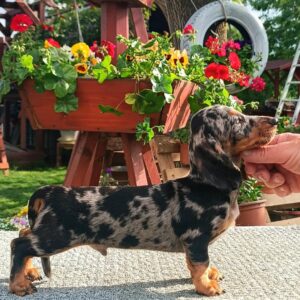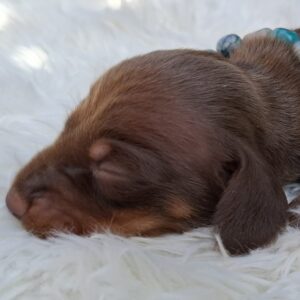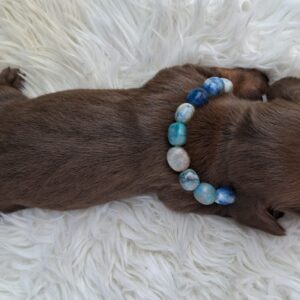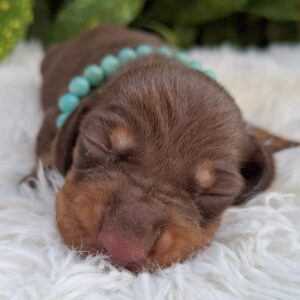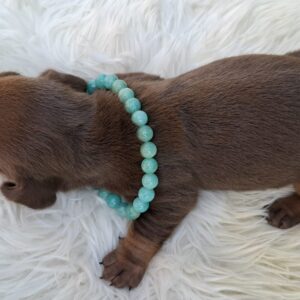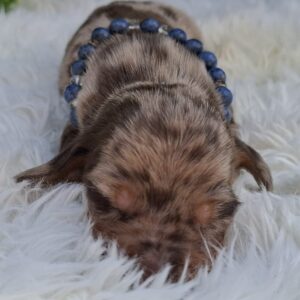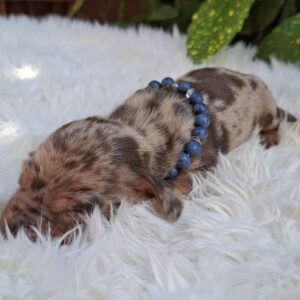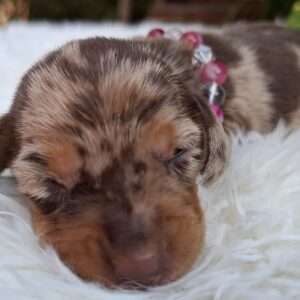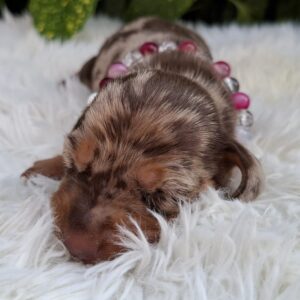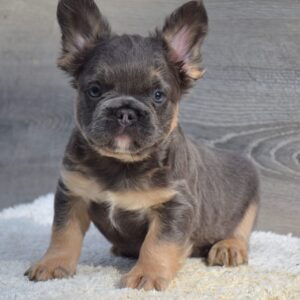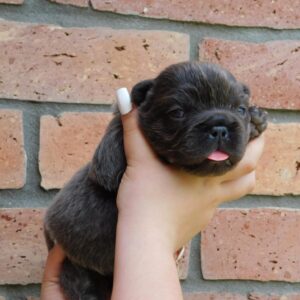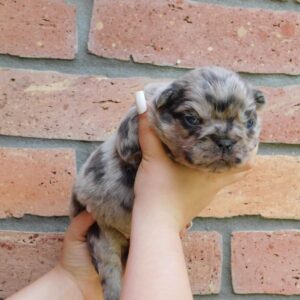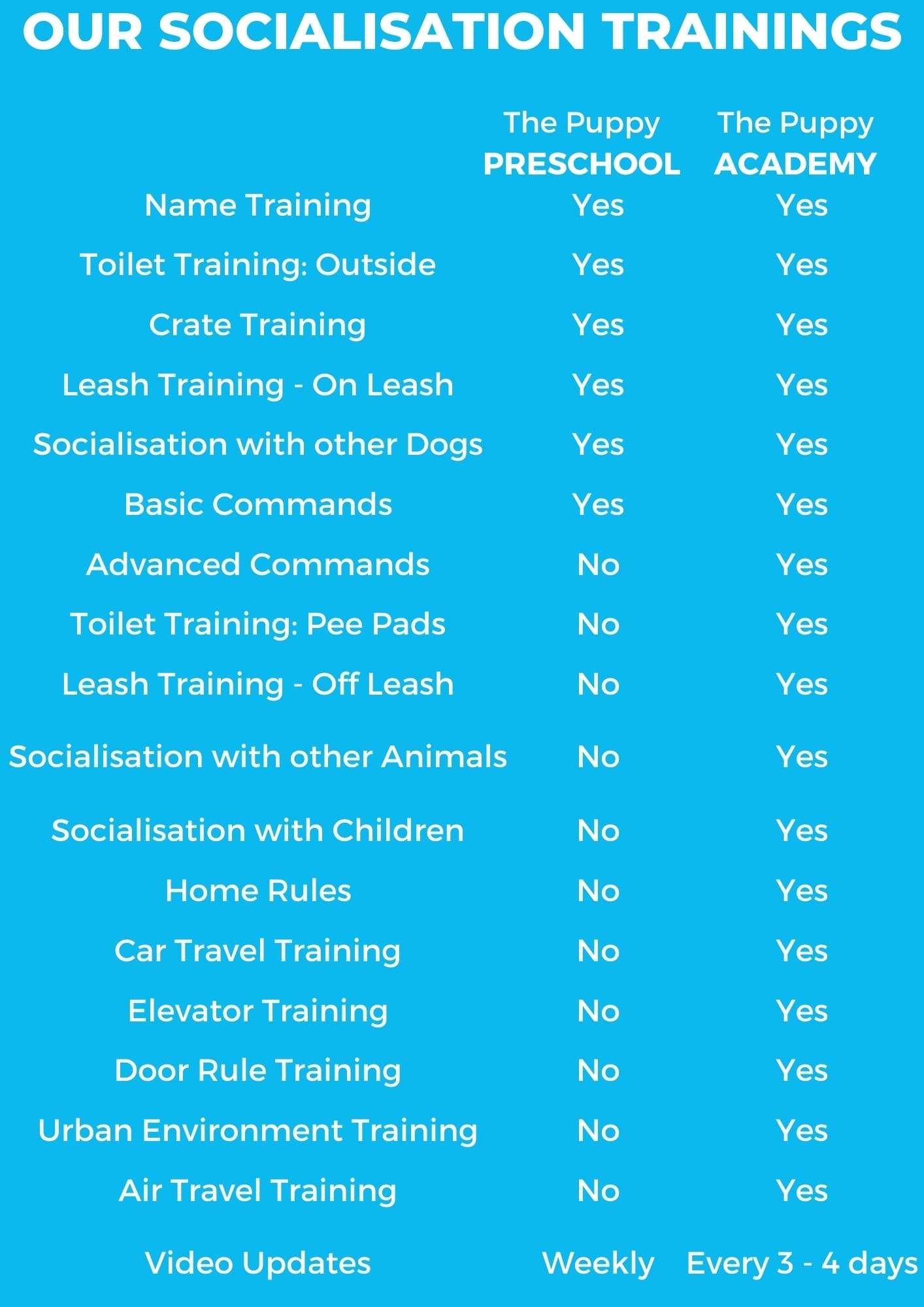BEST APARTMENT PUPPIES AND DOGS FOR SALE
Introduction (what makes a breed a good apartment dog)
When it comes to finding a place to live, more and more people are choosing apartments, whether it is due to price, location, or preference. Apartments are great for humans, but what about our dogs? Not all dogs are suited to apartment life. Some are too large, some are too energetic, some shed too much, and some are just too noisy! If you love dogs but live in an apartment, you may be concerned that having a dog just isn’t possible, even if the landlord allows it.
Fear not! The team at NewDoggy have put together a brief guide to apartment life with a dog. We will take you through the different factors that you’ll need to consider, and provide a list of suggested dog breeds that often do well living in apartments.
Life with a dog in an apartment
Just how small is your apartment? There’s a big difference between a three bedroom apartment and a studio flat.
Small apartment: A studio apartment or a one bedroom apartment will have limited space for a pet. In a studio apartment, the only separate room is your bathroom, and perhaps a pantry. Smaller dogs won’t mind, but larger breeds may feel confined. Large breeds are also more likely to knock objects down by mistake: a wagging tail can easily send that vase on the table flying. It may also be difficult to fit a bigger dog’s bed or crate in such a small space. Small to medium dogs that aren’t too energetic will probably be content in a small apartment, provided that they are properly exercised.
Large apartment: Larger apartments are more flexible. Your dog has more room to move around, and there’s enough room for your dogs bed, crate, and various belongings. Bigger dogs are also far less likely to accidentally knock things over. If prefer your dog not to sleep in your room, this is a great living situation. Larger breeds such as Greyhounds are a better fit for larger apartments. Keep in mind that you will still need to provide proper exercise for your dog.
Life in an apartment with a small-size dog
Smaller dogs will certainly feel less confined than a large dog would in an apartment. For a tiny Chihuahua, even a one bedroom apartment may feel like a palace. Small dogs tend to be yappy, which will not make you popular with your neighbours. It’s worth training your dog to “speak” and “be quiet”, but breeds like Pomeranians, Chihuahuas, and Yorkshire terriers are naturally vocal. Although small dogs are usually happy to live in an apartment, they still need the opportunity to stretch their legs, go to the toilet, and get some fresh air, so make sure to walk them at least twice a day.
Life in an apartment with a large dog
Some larger breeds do well in apartments. Usually relaxed dogs such as Greyhounds will be content with regular exercise. More energetic or clumsy dogs may feel cramped, and may become destructive out of frustration. Some energetic dogs are able to live in apartments if they are exercised properly, or if they spend most of their time outside of the apartment.
Maintaining a dog in the apartment
Shedding (Hypoallergenic or Shedding dog): If you’ve only lived with a dog in a normal house, you may not have noticed how much they shed. If you move to an apartment with your dog, you will soon notice just how much loose hair comes off them! The amount of shedding varies from dog to dog, though some breeds are notorious shedders (a Tibetan Mastiff will happily redecorate your carpets with loose hair.
A St Bernard will do the same, with the addition of a little drool). If you have the patience to thoroughly brush your dog, a collection of lint rollers, and a good vacuum cleaner (an automatic vacuum cleaner can be indispensible), you may be able to cope with a heavy shedder. If the thought of all that loose hair fills you with dread and an urge to sneeze, you should opt for a low-shedding or hypoallergenic breed.
Grooming: Dogs have a wide variety of coat types, and some are more time consuming to care for. Short haired breeds typically can look after themselves, but long-haired dogs or those with unique coats may need some help. Long-haired dogs will need to be brushed. Low-shedding dogs, such as Poodles, may need to be clipped to prevent tangles and mats. Consider how much time you can dedicate to brushing, and whether your budget can include regular trips to the dog groomer.
Hygiene: Toilet training is a must for apartment life. This can be tricky with puppies, as they to relieve themselves more frequently. Pee pads are very helpful, though in smaller apartments you will notice the smell more quickly. Change the pads frequently to reduce the odour and keep your flat clean. A regular feeding schedule will also help with proper toileting, as your dog will learn to go at particular times. If you have access to a common yard or garden, be courteous to your neighbours and clean up after your dog.
Faeces are easily removed with a plastic bag, and you can pour a bucket of water over urine. Keep common areas such as corridors or the stairs clean too. Sweep or vacuum your apartment to remove shed fur and dander. You should also treat your dog for parasites such as fleas, as your dog can pick these up from other dogs or from the environment.
Health: You should make sure that your dog’s vaccines are all up to date; the same applies for parasite prevention (you do NOT want fleas in your apartment!). Older dogs, toy breeds, or those with joint problems, may struggle with climbing the stairs (even the fittest Chihuahua may be a little out of breath after scaling five flights of stairs!). If you don’t have a ground-floor apartment, you may need to carry your dog or take the lift.
Space: As we’ve mentioned before, some breeds do better in small spaces. When choosing an apartment, trying to pick one with enough space for your dog to move around comfortable. Apartments that open on to a garden or yard are good option for a dog, as you can let them out for a quick run or to toilet (but respect your neighbours and clean up after him/her). Balconies are also a good option: you will have more fresh air and natural light, and your dog may enjoy relaxing on the balcony, watching the world go by. Your dog should have his/her own little space within the apartment: a safe “den” where they can rest and relax. This could be a dog crate or bed, or even a cosy blanket. Like humans, dogs sometimes need a little down-time, and your dog will appreciate having space for this.
Behaviour (Barking, howling, etc.): Dogs need mental and physical stimulation top remain happy and healthy, but how much is needed depends on the dog. A bored dog will often develop behavioural problems as a coping mechanism. These can range from destruction to inappropriate urination and barking. Sufficient exercise is essential for a dog’s wellbeing.
Active dogs, such as Corgis or Basenjis, need more frequent exercise, whereas Greyhounds are generally happy with a quick run in the park and a slow walk around the neighbourhood. Intelligent dogs like Collies will also benefit from learning new tricks, as mental exercise prevents them from becoming bored.
If you work long hours away from home, you can invest in a dog sitter. You can drop off your dog with the sitter. A dog sitter can also exercise your dog, and some may offer training services. If they look after other dogs, your dog may appreciate the opportunity to socialise. You can also share favours with a friend or neighbour, taking it in turn to look after each other’s dogs.
Although some dogs bark from boredom or distress, they may also bark to warn that people are approaching (or if they spot a squirrel outside!). Some breeds, such as Pomeranians, are vocal by nature: even with proper exercise and plenty of mental stimulation, they will still bark. Luckily it is possible to train dogs out of excessive barking. One method is teaching the “speak” and “quiet” commands. You can consult your vet or dog trainer for more ideas.
Training: Your dog doesn’t need to know every trick in the training book, but toilet training is a must. Your dog should know which places are appropriate to toilet in: outside the apartment, and designated areas such as toilet pads. Teaching “speak” and “quiet” can be useful for a vocal dog. Dogs with separation anxiety will benefit from a training program that will increase their confidence and help them learn to be alone. Your dog should also learn how to behave around other people and animals.
Your neighbours will probably not appreciate a dog that bark or jumps at them. Work on proper socialisation with your dog from a young age, and teach them proper manners. Crate training can be beneficial. A crate can act as a safe place for your dog, helping them to feel secure. It can also be helpful when toilet training a dog.
Shall I opt for a male or female?
There are some differences between the sexes. Males tend to be larger, and often have bold yet calm personalities. Females tend to be smaller, and depending on the breed, may be more reactive than their male counterparts. Females have a reputation for being cunning, and males are often considered “goofy”, but these are broad stereotypes and don’t apply to every dog.
All in all, it may be better to pick a dog based on personality rather than sex; however, if you are not planning to neuter your dog, keep in mind that male dogs may mark their territory with urine, which can lead to them urinating in the apartment! If your female dog is not neutered, she may have vaginal discharge when she is on heat, which can stain your soft furnishings. Unneutered female dogs will also attract males, and you’ll need to avoid them mating or you could end up with a litter of puppies.
Should an apartment dog be neutered?
There are advantages and disadvantages to neutering your dog. Your vet can advise you, but his/her advice can vary depending on where you live, and what current research suggests.
Females ♀:
Advantages: Unless you are planning or entering your dog in breed competitions or breeding from her, it may be a good idea to neuter her. Neutered dogs will not go on heat, so your dog won’t produce bloody discharge or attract every male dog in town to your doorstep. It can prevent potentially lethal infections of the uterus (pyometra), mammary tumours, and false pregnancy. A neutered dog cannot get pregnant, so you avoid unwanted puppies and serious complications associated with pregnancy and birth.
Disadvantages: Neutered females tend to put on weight more easily. Spaying can also increase the risk of haemangiosarcoma (a type of cancer) in certain breeds. Hypothyroidism (decrease function of the thyroid gland) is another possible issue. Spaying can affect the size of the genitals, which makes some dogs prone to genital infections. If your dog is neutered too early, she will be at risk of hip dysplasia, bone cancer, urinary incontinence, and torn ligaments: your dog needs time to grow and develop correctly before she can be neutered.
It is important to consult a veterinarian so that you can make the best choice. Some dogs are more prone to complications from spaying, so keep this in mind so that you can make an informed decision.
Males ♂:
Advantages: the biggest advantage of neutering dogs (apart from preventing them from producing unwanted puppies) is that it reduces their urge to mark their territory with urine. Male dogs urinate to claim something as part of their territory unfortunately, this can involve peeing all over your apartment! Although training may help, unless you are planning to compete in breed shows or keep your dog for breeding, you can save yourself a big hassle by neutering your dog.
Neutering can also improve your dog’s behaviour. Some males dogs can be aggressive or dominant, but neutering can reduce this tendency. Neutered males can also be a lot easier to train, and less likely to engage in behaviours such as humping. Neutering can be good for your dog’s health, as it reduces the risk of prostate disorders, testicular cancer, and perianal fistulas.
Disadvantages: neutered males are more likely to become obese, although diet and a good exercise routine help a lot. Neutered dogs of certain breeds are more at risk of a type of cancer called haemangiosarcoma. They are also more likely to develop hypothyroidism, and canine “dementia”. As with females, neutering must be done at the right age; neutering too early puts the dog at risk of torn ligaments, hip dysplasia, and bone cancer.
It is important to consult a veterinarian so that you can make the best choice. Some dogs are more prone to complications from spaying, so keep this in mind so that you can make an informed decision.
20 best apartment breeds
We’ve put together a list of dogs that can adapt to apartment life. Our list includes dogs with different sizes and energy levels, so you are sure to find a breed that you like.

Greyhound: You may think that a greyhound is too big to live in an apartment, but that’s not the case. They are big dogs, but they are also calm, and often quite lazy! Your Greyhound will need to go for a run every day, but after burning off that energy, you’ll find that these dogs are happy to laze around. The downside is that Greyhounds shed moderately, but you can control the worst of it with gentle brushing.
Chihuahua: The tiny Chihuahua will have more than enough space in your apartment. If your flat gets hot and stuffy, you’ll find that most Chihuahuas cope well with heat (though the more snub-nosed ones will need some help to stay cool). The Chihuahua can develop a Napoleon-complex if not properly socialised, becoming possessive and even aggressive! it’s vital to nip this behaviour in the bud to prevent your Chihuahua from becoming a tiny terror!
Basset Hound: This short-legged dog may have a mournful expression, but they are a joy to keep. Relaxed and sometimes lazy, the Basset Hound is a great apartment dog. They hate to be left alone. A lonely Basset may howl, bark, and trash the place, so this is not a good pick if you have to leave your dog at home all day.
Bichon Frise: These little white dogs are very affectionate, but also intelligent and playful. These qualities make them popular family pets. The only downside of the Bichon Frise is that their beautiful curly coats do need a lot of care and grooming to stay in good condition.
Bedlington terrier: This friendly medium-sized breed is a great choice for first-time owners. The Bedlington is a typical terrier and loves to play, especially if it involves pouncing on small unsuspecting animals. This breed is fairly active and will happily join you on walks or a game of fetch. They need twice-weekly grooming to prevent tangles and mats, but fortunately their tightly curled coat does not shed much.
Cavalier King Charles Spaniel: Beautiful and sweet-natured, the Cavalier is a great size for an apartment. They do need daily walks, and if you have access to a fenced yard or dog park, your Cavalier will appreciate the opportunity to run and play. After exercise, the Cavalier will be happy to curl up on the sofa next to you. Keep in mind that this breed hates to be left along for long periods of time, and need through daily brushing to prevent knots and tangles.
Corgi: If you live in an apartment and love exercise, the Corgi is a great choice. These small dogs are very active and will happily join you, whether it’s for a walk, run, or cycle. Daily exercise will also prevent your Corgi from getting fat, as these dogs are prone to weight gain.
Havanese: Intelligent and sweet, the silky Havanese adores people, and will stick to your side like glue. Their small size makes them well suited for apartment life, and they don’t need a lot of exercise. The Havanese is prone to separation anxiety, but if you work from home (or can bring your dog to work) you’ll have no trouble.
Yorkshire Terrier: They may be small, but Yorkies have enough personality for ten dogs! The Yorkshire Terrier is small, making them the ideal size for life in an apartment. They are playful and surprisingly adventurous, so don’t deny them their daily walk and playtime. The downside is that Yorkies can be difficult to housetrain and their yappy nature may annoy your neighbours. They also need regular brushing, and occasional visits to the dog groomer.
Coton de Tulear: The fuzzy little Coton de Tulear is both cute and kind, and makes an excellent family dog. They are very clever and sporty, so could be a great choice if you are interested in canine sports. Their coat does need some dedication to keep it in good condition, and they are prone to separation anxiety.
Basenji: The Basenji may seem a little large for apartment life, but they do quite well in apartments if exercised properly. They are friendly to just about everyone, including children and other dogs. Their short coats need very little in the way of grooming, as they only shed occasionally, and can be kept in good condition with a little brushing and the occasional bath. The Basenji is very clever and can be stubborn; they are also well known as escape artists. While they do not bark, they often make unique sounds such a yodelling, and a noisy Basenji may drive your neighbours mad!
Chinese Crested: Social and sensitive, the Crested needs proper socialisation as they tend to be nervous with strangers. They make great family dogs, though the Chinese Crested is more suitable for older children as they are small and fragile and can get hurt by mistake in rough play. The Chinese Crested is a low to moderate shedder, but does need regularly bathing and grooming to stay healthy. They tolerate the heat well, but they do not cope well with the cold.
Miniature Pinscher: Perfectly sized for life in an apartment, the Mini Pinscher is tiny but tough. They make up for their small stature with tons of attitude! They have plenty of energy, so make sure to properly exercise your Mini Pinscher. They are sensitive to cold, and their curiosity occasionally gets them into trouble: crate training may prove very useful for keeping them out of trouble!
Toy and Miniature Poodle: Although the larger Poodles may feel cramped and confined in an apartment, the smaller Poodles will do just fine. The Poodle is fairly easy to care for, though you’ll need to take care of their curly coat (you may need to consult a dog groomer); the upside of this is that they hardly shed. Poodles of all sizes are clever and capable of learning a wide variety of tricks.
Shiba Inu: This medium-sized breed adapts very well to apartment life, provided that you exercise them properly. The Shiba Inu is fastidiously clean, so needs little grooming, and is quite easy to house train. If you decide to get a Shiba Inu, you’ll need to keep him/her company, as they can be destructive if left alone for too long, or if they get bored.
English Bulldog: The English Bulldog is a loveable dog that is known to be great with kids. A medium sized dog, the Bulldog is sweet natured, loyal, and very sociable. Note that Bulldogs may sometimes be aggressive to unfamiliar dogs, due to their strong desire to protect their family. Bulldogs also don’t need much exercise – just a daily walk. The English Bulldog overheats very easily, so make sure to keep them cool in the summer.
French Bulldog: The French Bulldog isn’t just a pretty face – they are also clever dogs and, as long as their lessons are fun, should be easy to train. They are also protective of their families, and make surprisingly good watchdogs. French Bulldogs love to be around people, and are good indoor dogs as they don’t need much room. They also get on well with children, and don’t need much exercise, though a daily walk is needed to stop them getting overweight.
Dachshund: These little sausage dogs are clever, curious and courageous. The Dachshund is also a loyal family dog, although they can be stubborn and difficult (but not impossible) to train. The Dachshund is a better pet for older children, as they will find it easier to gently discipline the dog. Younger children may let this pint-sized pooch get away with anything.
Find the best apartment Puppies for Sale
Healthy, purebred apartment puppies directly from ethical breeders. Shipped worldwide with 10 year Health Guarantee.
References
29 Best Apartment Dogs for Small Spaces – Dogtime. Dogtime. (2020). Retrieved 13 June 2020, from https://dogtime.com/dog-health/general/4404-good-apartment-dogs-list
Best Dogs for Apartments – American Kennel Club. American Kennel Club. (2020). Retrieved 13 June 2020, from https://www.akc.org/dog-breeds/best-dogs-for-apartments-dwellers/.
Picard, C. (2018). 15 Best Apartment Dogs for People With Small Spaces and Big Hearts. Good Housekeeping. Retrieved 13 June 2020, from https://www.goodhousekeeping.com/life/pets/g22875083/best-apartment-dogs/.






















